Public Space
Zsófi: Welcome to PUHA podcast, which stands for Performative Unity in the Hungarian Arts, produced for HowlRound Theatre Commons, a free and open platform for theatremakers worldwide. We're your hosts, Zsófi and Bíborka.
Hi, everyone. I'd like to give a warm welcome to all of our guests. Thank you for joining us. And all the listeners on HowlRound Theatre Commons or elsewhere. Now let's kick this off. So, let's welcome our guests. And first we would like to go around and say your name. If you would like to, include your profession. And then give a very brief sentence answer to the question: What is performance art? And the good thing is, you don't have too much time to think. So that would be lovely. Who wants to start?
Dávid Somló: I want to start. Hello. My name is Dávid Somló and I'm an interdisciplinary artist working with sound-space and interaction. And what is performance art? In my dictionary, performance art is, for me, it's closer to actually fine art in a sense that I think it's more about basically symbolic gesture rather than using the traditional composition or dramaturgical methods of theatre or contemporary music or contemporary dance or things like that.
Flóra Eszter Sarlós: Performance art, it’s presence.
Gyula Cserepes: Hello, my name is Gyula Cserepes. I work mostly as a choreographer, a performer, and a teacher in the field of contemporary dance. And doing my preparations in my research for your podcast, what I came up with in relation to performance art, is I think it's art created through actions. And I agree very much with Dávid in terms of it being related, in my opinion, closely with fine arts and interdisciplinary art. Thank you.
Sarah Günther: Hello. My name is Sarah Günther. Yeah, and here the question starts. I'm working a lot with different art forms, and I like really the word “theatre” to use for it. I studied drama theatre media. It was at the intersection of different art forms. And I like this form of experimental theatre. And we also used the term of “performance” for what we do a lot. I think there are different—it's already starting me to think, to hear the different definitions of the others, what it is. For me, theatre is an overall term, for example, and performance is one form, for me, of theatre, which is more linked to visual arts or to other art practices maybe. But yeah, because of its community factor and giving theatre as a forum often, then performance is, for me, a part of the theatre world in my practice.
Bíborka: What do you think is the opposite of public space?
Flóra: These non-spaces, for me.
Zsófi: Non-spaces?
Flóra: Yeah. You said one word.
Zsófi: Okay you can elaborate.
Flóra: Yeah “non-spaces”—I met this term in Denmark—when places that's supposed to be public spaces in the city, but no one is basically using them. So somehow, they are not functioning as a public space.
Bíborka: Can you say an example? Like in the city or where are these?
Flóra: There was no one and it was a good spot, but still somehow it was not in the circulation of the city to go there. And then I used this space. So it was just lying there empty.
Gyula: Listening to Flóra, I realized that perhaps to me, the opposite of public space would be no man's land. This land between the border of two countries. As a child we crossed a lot of times between Yugoslavia and Hungary, and that always captivated my imagination when my parents told me, “This land is no one’s.”
Sarah: Yeah. The first association, when you told me the question when I arrived here, was Coca-Cola. I don't know why I thought about that. Yeah. I have maybe some thoughts about that. But even though now with Coca-Cola not selling Coca-Cola in Russia anymore, it's also part of a public sphere somehow. So even it's not, maybe there is something. The other thing which comes concretely to my mind is Metaverse but also it's a question mark.
Bíborka: Metaverse?
Sarah: Yeah. Metaverse.
Bíborka: What is that?
Sarah: I mean, that's what the dystopic utopia of Zuckerberg for Facebook: that we have this virtual reality where we meet, where we watch together movies. And I think really why I think about it is because I think the structure of it is that you can buy space there to share, but everything is commercialized. I mean, if it's a virtual space and I think it aims a lot to make capital, to monetize a lot of functions of life. And for me, public is a common—it's not the privatized space. So first of all, I think about this.
Dávid: Through kinetic knowledge of how people like to be in spaces and not really giving space together or comfortably be in those spaces. And I think if there would be some space to actually… that the public would be able to transform these places, even in simple methods, then it could be way more organic. And it's super simple. I've seen it in Prague. They had this campaign where they've put out just a lot of tables and chairs all around Prague anywhere in the squares. And people could actually move it and sit there. And then it was written the campaign logo on the thing, and then people could make their own spaces within the city.
Bíborka: I actually also like observing them. There's an official term for this. I even read the Wikipedia page, but I forgot. You know how there are these footpaths in the grass, and when you see that people make their own ways, that there's no pavement there. And how they shape the space, it's really interesting to see.
Dávid: Yeah. I heard that in some places, actually, they first let the people do the pathways and then they make it into a little road or something.
Zsófi: These are called desire paths, actually. I learned it in some permaculture aspect.
Bíborka: So poetic.
Zsófi: Yeah, desire path. The first thing that came to my mind, the first association, the opposite of public space was the sauna. Because it's weird how you're there, but it's yours. People are like, “Oh, can I come in? Can I not?” But then actually, coming off from Sarah's definition, the virtual world, that's like, for me, totally. It's where you enter, and nothing is communal anymore.
Bíborka: I was actually thinking first of my bed, but then I realized actually being on my phone in my bed, let's say, and opening the Metaverse in my bed is kind of bringing the public space into my private sphere. And it's kind of creepy now that I think about it. Yeah.
Dávid: Don't do that.
Bíborka: Yeah, I think that's a good idea.
Zsófi: We can start by mentioning some current relevant projects. If you want to share something that you might be working on these days or in the future. You have plans?
Gyula: What I am working on right now is going to be a sort of site-specific performance. And it is going to be a seven hours long dance solo, which is meant to happen in Artus, which is a studio here in Budapest. And then also I'm planning to livestream the whole event. So that's what I'm into right now.
Bíborka: And do you know exactly what you're going to do in the seven hours or how much of it is improvised?
Gyula: I'm working now with a Mexican music composer on structure for the seven hours. He's going to compose music for that. And I have a starting point of using seven different traditional dances, which I would like to tear apart and deconstruct, reconstruct, analyze, et cetera. So for the moment I'm imagining that I would dedicate each hour to a different region from traditional dance, and then spend that hour somehow under the influence of that source of inspiration or atmosphere or whatsoever. But I'm pretty much in the beginning of this process, so in two months it is meant to happen on the fourth of June. So until then, a lot of things can change.
Bíborka: I have one more question. Will there be a live audience or is it only the livestream or only is the audience virtual?
Gyula: Yeah, the idea is to have both. So for people who will be able to come and would like to come, we are planning to open the space. And the livestream is for everyone else who, for whatever reason, couldn't be present physically.
Zsófi: Thank you.
Dávid: I have two projects that I would like to mention. So the one which is going to be premiered in late April is a collaboration with Ábris Gryllus, who is a fellow sound artist, and he makes a lot of installations as well. And we are preparing a kind of contemporary memory sound performance for the COVID—how do you say it? Who died in the COVID?
Zsófi: The victims?
Dávid: The victims of COVID or the whole area. And it's kind of communal. The idea is that we are transforming the daily data of the new cases and the new deaths into a quite minimalistic composition. And it will be played from twenty speakers, organized in the way as the twenty counties, including the capital of Hungary. And we are going to transform this twenty separate data to the twenty speakers. And on one screen, we are going to show the days, day-by-day so you can really sync through these two years together with the whole audience. And the dynamics of the piece is going to really follow the dynamic of the waves. And it's called Every Day, it's going to be end of April.
And what I have for the next bigger public space project in my mind is a really large-scale choreography. To my practice, it's quite usual in my practice that I'm always transforming the previous piece into a new one. So, I've already done three pieces, which included some kind of choreography of working with speakers. First, I've done a very simple choreography for foot tunnels, so a straight line. Then I made an interactive choreography where people could follow pathways and it was totally interactive. Then I made this piece called Drift that you also participated and mentioned, which was again for fifteen performers, and it was more like a choreography with a dramaturgy.
And now, I want to make a choreography for a hundred people and make it so simple that people can come and learn it within one hour and then we perform it together. But I'm really interested to make it something really big with a lot of people, and to explore the choreography of this mass of people.
Flóra: Yeah. So, I'm preparing a performance for PLACCC dance festival for the beginning of June with five dancers. And it's a continuation of research that I started in Copenhagen in Denmark during a residency three years ago. And I couldn't continue because of COVID, because the performance is about how to discover, how to sense the city—like one part of the public space—in a way that for dancers always take one participant and make him or her travel in the space. And we did it barefoot without any technical equipment.
So, it was really just sensing, touching things, sensing the sounds, traveling according to how the participant is reacting. The dancers are trained how much they can lift up someone and really take this person with closed eyes into different positions or how much they have to be more smooth and careful. And it's a performance that lasts fifteen minutes per participant. And it was a really, really good experience for us in Copenhagen. So I'm very curious how Hungarians will react in public space because there we register just a few participants in the beginning, but then people came from the street and they kind of lined up to try it. So I'm very curious if it will ever work here, to get people to participate. And also, during all this time of no physical closeness and not touching each other, it's a very intimate situation with someone that you don't know. Yeah, we are constantly thinking how to take this performance after all these two years of COVID.
Zsófi: How did you gain the participant's trust in Denmark, and how are you planning to do that in Hungary?
Flóra: Yeah. Actually, say it's the first two minutes where you have a chance to gain the trust. So you really have to build it up, and you ask the participant to close his eyes or her eyes only when this person feels comfortable. Yeah, so it depends a lot on these four dancers—how they can collaborate and how they can understand the participant and each other immediately. There were some participants who were really crying by the end because it was like a childhood memory that when you can really trust someone, you would be kind of like a child, a baby, that you just let yourself taken by other people. So everyone was reacting in a different way. Someone was laughing the whole time. So yeah, I'm very curious to continue this research in the public space of Budapest.
Zsófi: All of what you're saying are just so exciting because I really find that there's so many different ways of engaging with the public. And I think in all the projects you mentioned, it's really different what it means—even the audience or the venue or all of that. So yeah, I'm looking forward to following up on it. But Sarah, do you want to say something before then?
Sarah: Yeah. Because actually it's a question: For what do you use public space? A lot of time as I am here, also an agent—not just of myself marketing, but also employ myself of our network we are working with also, which is existing since 2008. And now we have a new project, and I would just make a call for all these millions of people listening to us right now in Budapest that next Friday from five ’til eight, we will be on Zsófi's favorite public square in Moszkva Square. And we have a field experience digging out The Society of the Spectacle from Guy Debord, starting with the situationists. This is a collaboration of, with the Márai Culture House in the first district.
And our final aim will be in May to—I mean, we are searching collaborators who are interested in doing arts with us in their free time. And that's also one of our principles with Pneuma. We often make very open community processes. And this time we are searching for special events. And now for two evenings, Fridays from five ’til eight, we will go out with the situation practices, which influence our work, I think a lot.
That's something which is found in our performances before. Also that we use public space because it's the space of our society, and when you look at it and when you experience it with your body, you can feel how society works. And when you check how you want to live—how you want to be with people—then this is an essential thing for me. And that's the biggest energy project we had was probably when we built a huge—and I dig it out now of the closet again. That was our emblematic project, was a huge squirrel, which Dávid also still knew in 2012, where we build a huge squirrel in the streets of Budapest. Yeah. That's also maybe one project to name, but here I stop the babbling.
Zsófi: And how did people react to that squirrel? Any interactions?
Sarah: Basically, we opened up for ten weeks an open space, and our topic was street as living place. We inhabited a non-space, so to say. Well, it became already a non-space. It was a closed playground. I mean, it had a function, but it lost a function, which for me became a non-space. So we opened up, we cleaned it, and the neighbors joined us. We invited mostly white, middle-class, young artists and also addressed street experts. We also addressed the periphery living on the street. And we also collaborated with writers who defined themself as homeless. But it was like, it didn't matter, actually, where you came from, but we tried to open up a very open community and build together a huge squirrel out of trash. And then we had a procession with the squirrel through the streets after the ten weeks. And with music and songs were developed, where also Dávid took part and kids from the neighborhood, whoever.
I mean, every reaction was different. I would say. In our projects, we often encounter peripheries—like I think who you meet when you do something in public space, often people who want to talk, people who are lonely maybe for example. And we often we don't go to people, but we offer something. We put it in public space, something that is different, like a squirrel or a rolling donkey or music or whatever. Something strange, which could be art, which could be trash, which could be provocative, which could be entertaining. And then people react to it maybe by coming and asking, “What's that?” Or they join something, or they are rejected. It's very different.
Bíborka: Yeah. It's interesting because I think a lot of projects, you mentioned have some kind of ritualistic quality. I would be interested to explore what that does to people, like kind of take them out of their, I don't know, habitual, functional things. So the question which is coming, is that, do you remember the first moment that you engaged with public space as an artist? And can you tell us about that? How did you become interested in public space and what did you do with that?
Dávid: I have a very definite moment of how I became interested, which I always tell, which was through PLACCC festival, which is a festival of site-specific or public space art in Hungary. And with Flora, we are both associated with this festival. And they had a piece from a Dutch group or Danish—maybe a Danish group. And so, the piece started that we got one mobile phone, and they said that they're going to text us on this several instructions. And they sent us to a really ugly, big, busy public square that this thing's going to happen there first. And I had the biggest trip of my life, that's for sure. For five minutes, really the whole square was one big—it's not even theatre—I felt like in a film. Every single homeless peoples were and shouting. So it's like, “Are they actors? Or it was scripted?” And it's amazing. How could they do it so it looks so organic? And I was tripping like hell. And after five minutes, one actress came in, in the most simple way. But until then, I was totally done. So I think it's a very important moment.
The first time I really made my first public space piece was in London. And I devised this kind of sound choreography in this Greenwich food tunnel, which is—if you've been there—it's a really amazingly trippy food tunnel under the Thames. And it's 440 meters long and it's really a visual trip to go through. It was for eight performers who had metronomes in their ears and every one of them were walking in a different tempo, creating this kind of variations of distance while carrying around speakers. So it really was playing with the dynamics of this really one directional space but also really fill the space with sounds. So that was my first time.
Flóra: Yes. I can also say a lot of PLACCC Festival. But for me, the first moment which was not for dance performances, it happens quite a lot that you are taken to the public space, and you just dance something. But the first time I felt a delegation to public space station, it was in France. It was three weeks of Erasmus/residency program, and they just put us in a village, and we were sixty people, mostly artists or art students. And they told us that, “Okay, so now you have three weeks. You can choose a space and you can create something.”
And that was really for me the starting point that, oh wow, okay, so I can go through. There were three villages, and we were really researching the most interesting space: what to do when we started to sing, how to relate, what makes sense, how to take the context, the space, the architecture. But it was, of course, not an event space so maybe there were two thousand inhabitants in the village. So it was not about interaction but really the site.
So for me it was a starting point and then a lot of PLACCC Festival in Budapest. Also, collaboration with Kitt Johnson from Denmark. And then a lot of other things. Kitt Johnson, she's a choreographer of site-specific choreography. She's one of the mothers of how to create site-specifically, and she's giving workshops and she has her own methodology. Like, what to consider site-specific or site-genetic or site-adaptive; how to relate to it is as an artist.
Bíborka: I actually want to answer this question because I also started thinking about it accidentally. So, where I went to university was in the mountains in Vermont. And there was a big hill opposite our campus. And I saw a lot of people liked walking their dogs there and there were different paths in the hill. One day I was looking at it normal and you could have a coffee in front of it so that was really nice. And then I thought, yeah, you could see this as a choreography, how people just cross the landscape. And actually a friend of mine, a sculptor friend of mine, did this piece with a bunch of people walking in different groups and different compositions on the hill. And then I also wanted to just go into the landscape and be very conscious of how I go, and so I spent a day just walking, just with a composing mind.
And actually, then I did a couple pieces in the city here in Budapest. I mean, it's different, but I don't think it's that different from a natural landscape in that sense. It's very easy to engage with a field or a forest in a very sensual way. Like you were saying, to touch and to use other senses than visual. But I think it's also really valuable if you apply this to a cityscape. I like seeing those similarities a lot.
Zsófi: So, for me, it was more like that I really am super fascinated with borders and with bridges. I'm just always looking: What are the small scenes that are happening there that we just walk by without noticing or without paying any attention? And then I just really wanted to do something on the bridge, so that I did here in Budapest—just a small one that was on the Liberty Bridge. And without the audience standing there, you couldn't have known that there was some theatrical thing going on. And another thing that I'm interested in is the protest performances. We did one at my university in the U.S., which was in a way engaging with the space, but I didn't know that there was such a thing as performance art at that time.
Bíborka: Yeah. Accidental performance. I like that genre.
Gyula: Yeah. I lost a little bit the initial question. However, what stayed on my mind as a response is that I come from a family where my grandfather used to be a sculptor. So what I remember as a kid is being in public spaces where there were his sculptures all around. So I think probably subconsciously, that's an entering point to that sphere between public space and art. And then while I was listening to all of your answers, I remembered that when I was a kid, there used to be every year—I mean, I think it still exists—Tanyaszínház, which is a quite particular theatre group in the northern region of Serbia. And they travel every summer from village to village to perform theatre in Hungarian language to the locals. So, I think my first memory is seeing them on a playground somewhere in my town, and that's a strong memory in terms of all of a sudden realizing theatre could happen in spaces which are not called theatre.
Sarah: Yeah. I had, I think, during school time also street theatre experiences. I was part in a workshop, for example, with Polish, Czech, and German school kids. And then we made a performance on the street, but then I felt like this is still using the street as a scenery for a performance. And that other thing, that site-specific element, which we also work a lot, came maybe up during my studies. First of all, with my friend Roland. We took part in—Antonio Araujo was his name—a Brazilian theatremaker who took a scenic project. And he wanted—or I don't even know if I think it was not his idea—but for the course to make something public space and to make a celebration with one street in Giessen, this little city. And everybody thought about ways how to do their something, how to include inhabitants, and so. And we decided, the two of us, to move there for twenty-four hours. So, there was… aluljáró?
Zsófi: Underpass.
Sarah: Underpass, by foot and a street coming down exactly in front of it. And we installed ourselves in front of this underpass where the street came down and then it split. So we were at the end of the street. We called it the “Tale of Watching,” like watching to the forest TV, watching up the street. And then we installed a living place. We brought and we asked also the people if they have a little table for us or so. And then we had a timetable, like five o’clock in the morning bird watching. There was a train tracks also next to us. So, we went bird watching. At two o’clock there was reading hour. And then, for example, an actor came by from the Giessen Theatre, by chance, which we didn't know. But he stopped and asked what we are doing, and we said, “Oh yeah, we are living here for twenty-four hours, and now is time for our reading circle. So could you read us something?”
And then it was lunchtime. So we searched for somebody who invites us for dinner—lunch I mean—and people came by and had a coffee with us or brought something. And it was really this mixing up private and public in a very banal sense. And even the newspaper came, and we were in the newspaper the next day; these two people installed themselves. It was really a very good experience to just have this meeting point. And I think later we made our diploma project together with Roland and our other colleague Katerina, and we founded this—Mobile Albania, it's called. It's still existing, I'm just not so active anymore. First—I mean, that was our collective name—and the first step was to buy a bus and go and see what to do with this old bus in these spaces. And the aim was also not to make theatre for theatre scientists in a closed space but to see what's possible.
And our first performance was that we built a rolling donkey, and the donkey meets—that was called Red, the performance. It was happening on the most traffic crossroad in Giessen, and we wanted to know what is possible on the street—not on the sidewalk, but on the street itself. And so, we let the bus and the rolling donkey meet on the crossroad, had a nice concert with cars that couldn't pass, and then the donkey had some flute. So it started to be also some ritualistic, as you called it, situation where we enchanted bus and donkey and then moved further. And yeah, that was a very initial moment about what to do.
Can I have a question to you because you also worked in Denmark? We also had—on the outskirts of Copenhagen—we had a project. And as we worked on public space because we were there, we shoplifted a shopping cart and transformed it into a huge bird, a golden bird, and went with it through the streets. And there, Danish people, most of them pretended not to see us. Because normally we offer to bring something strange and then something could happen. But they were looking away, or a few smiled but the most of them didn't. We realized that it's totally different, the public space behavior, than here. I would be just interested how for you, it was; if you felt a difference to Budapest?
Flóra: Yeah. For me, they seemed very open-minded. So my experience was like, it's a very safe space. I had this feeling that the design of the city or the way the city is made, it's like a playground for you. When you mentioned riverbank, here there is almost no access to a public river bank like in other cities. In Copenhagen it's kind of amazing how much you can access and use the river. So for me, it really seemed—but I was there just for one month so it's my personal perception—it really seemed like a safe space. In Hungary, it's in the middle because then I have an experience with Cairo, and there the soldiers on the roof and they are looking at you and they have guns. And if you are taken as a spy, then you are really getting into trouble. So it's not possible to just go and start your own research and making something, I don't know, spectacular or suspicious on the street. So, it was the opposite of a safely filled public space for me.
Bíborka: What makes this successful? How do you measure success with public performance? Because I don't know. I keep going back to this. They sit there, they clap, but there's no like, “Okay, clapping, this is the end or not,” really often. So how do you know if it worked? What does it mean if it worked? How does it work? I don't know.
Gyula: The first thing that came to my mind is to relate back to that particular site-specific performance. I mentioned earlier, the one we made in Serbia. It happened in a relatively small village town—not sure what is the official rank of the settlement. However, in that particular case, I had no idea what to expect because I knew this was the very first time this settlement is going to experience contemporary performing arts. So in that case, to me, the fact that the people came was already a success. Then in December, when I was in one of the shop windows nearby, the fact that a few people running for their Christmas shopping stopped for ten seconds, I considered as a success. So I would again say in that sense that, at least for me, it depends on the environment and the context.
Bíborka: So, like, attention maybe, would you say?
Gyula: It would depend on the environment and the context.
Zsófi: Yeah. Because it's interesting because I keep going back to that. But if you buy a ticket for something, you are giving your attention for that one hour. It's a given. But it's more of a choice for a passerby to actually stop and give their attention or turn to you or go on. It's a more active choice, I guess. I don't know.
Gyula: I think generally speaking, whenever we are able to bridge that barrier of ignorance, I consider that to be success.
Flóra: Yeah. I totally agree. If you just can create a kind of shift for ten minutes or one minute or one hour, for me, this is also the success.
Sarah: I just feel good or bad after I do something. And then, either it created a good energy for me, which also depends if people afterwards say something or reacted, but I feel like it liberates energy. And I can't even [rationally] say, “What's the things?” And it's for all the things I do, I think. Either I feel bad afterwards or good, and then I can rationalize: “It's because of this or this, but maybe it's very personal.” And we don't have key measures to say, “Okay, this was successful.” I can really agree, if people just watch something different in this world, maybe that's already a cool success. Yeah, I would also link to that. But for me, it's just a feeling.
Dávid: For me, when I'm able to create shift in the attention of this passersby. Basically, you could walk hypothetically in the streets in a way that you are completely sensing everything, and then you are really sensing the other people around you: how they are walking, the space, the architecture. You're really paying attention to the sounds, and you are really present but it's like, yeah, it's almost never like this for basically anyone. And then I'm interested in this kind of attention. And then when I'm able to make this for people who really don't know. They just—suddenly inside something cracks and then suddenly they are there, and they are really experiencing some kind of higher attention or the gravity of things. And that's, for me, the success.
Zsófi: That kind of reminds me of what Flóra said in the beginning of her definition of performance art, which is presence. And all of this, what you say, is just putting people in a special presence in relation to the spaces and maybe it changes something in their perception afterwards. That's for sure that—I think I told you this before—that now that I go to Moszkva Square, I always remember that. It just changed the way I look at it, even though I was there all my life. So, if that happens to people, I guess that's also really cool. Of course, a lot of times you don't know about it because they don't find you afterwards at a theatre performance. But yeah, if someone's walking on the Liberty Bridge and remembers like, “Oh, I saw something weird here the other day,” that for me, means in a way success.
Bíborka: Yeah, that actually reminds me there's something, well, I wouldn't say selfless, but something different about it that they don't really know your name or the title of the piece or anything. It's that form of… maybe it's a form of honesty. I don't know. That they just happen to encounter something, and they didn't read about the concept in a flyer or any kind of promotion. It's very different, I guess.
This has been another episode of the PUHA podcast. We are your hosts Zsófi and Bíborka. This podcast is produced as a contribution to HowlRound Theatre Commons. You can find more episodes of this series and other HowlRound podcasts in our theatre, on iTunes, Google Podcasts, Spotify, and wherever you find your podcasts. Be sure to search HowlRound Theatre Commons podcasts and subscribe to receive new episodes. If you love this podcast, post a rating and write a review on those platforms. This helps other people find us.
You can also find a transcript for this episode, along with a lot of other progressive and disruptive content on howlround.com. Have an idea for an exciting podcast essay or TV event the theatre community needs to hear? Visit howlround.com and submit your ideas to the commons.

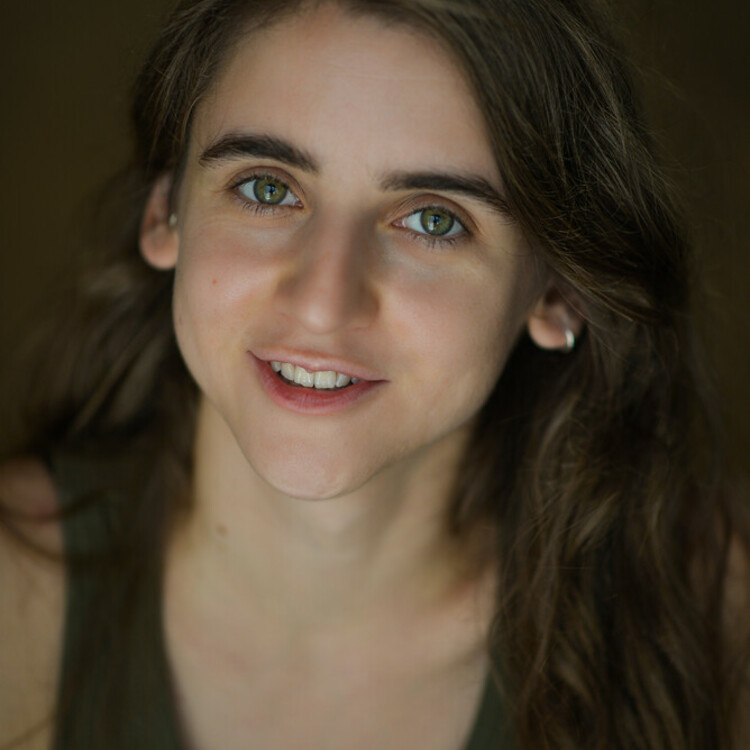
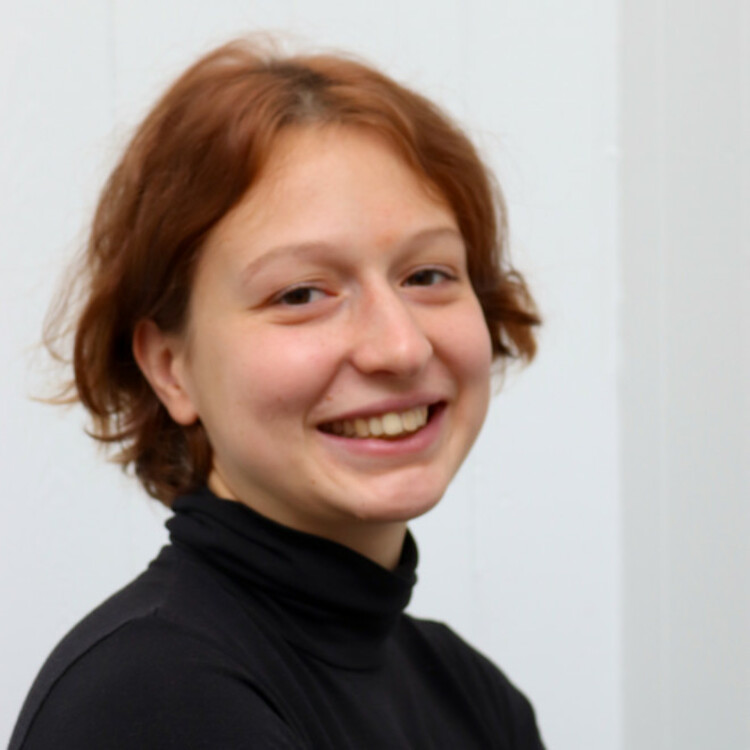
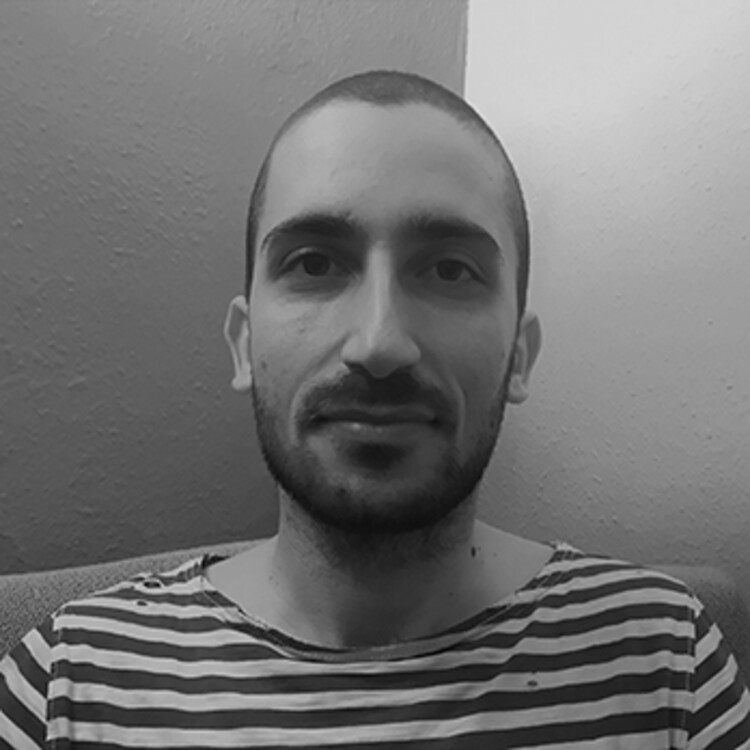
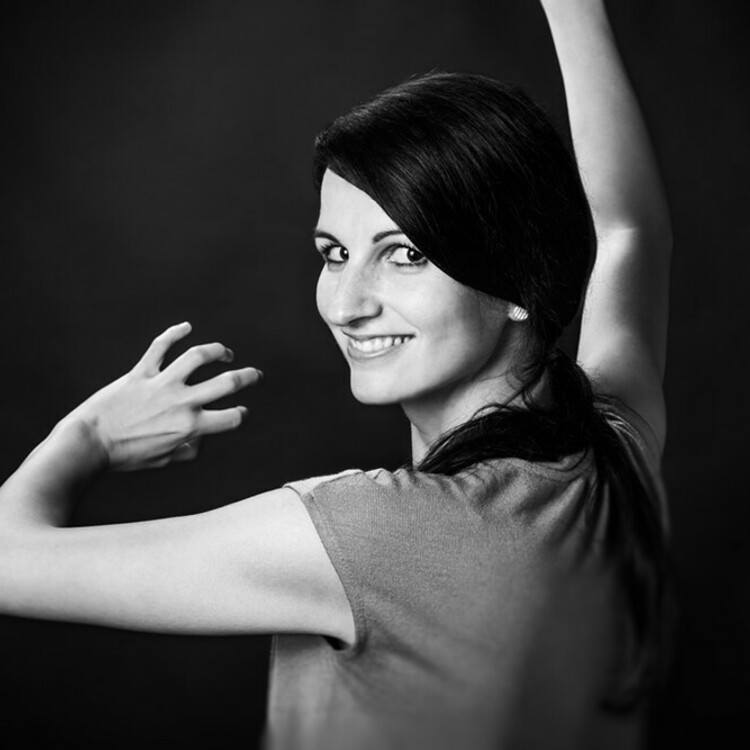
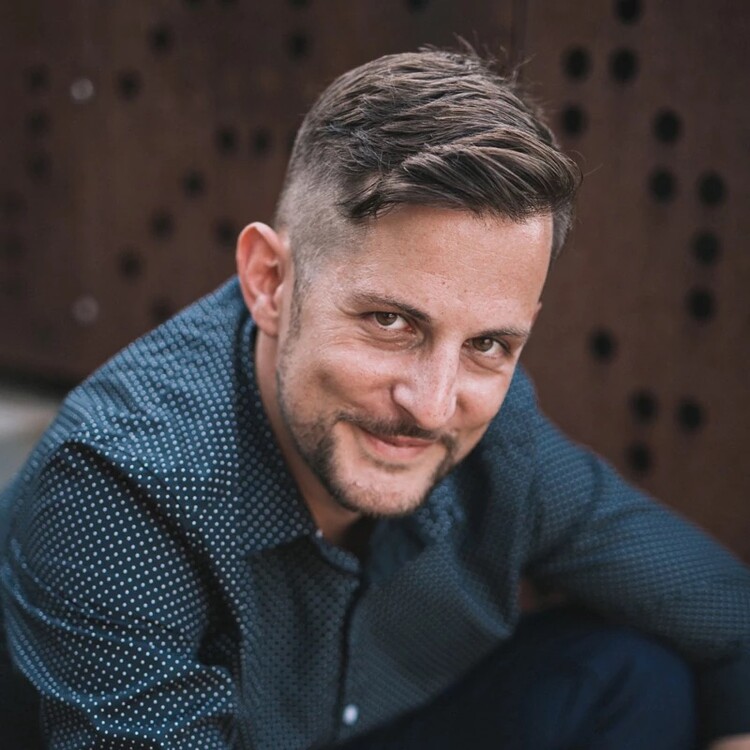
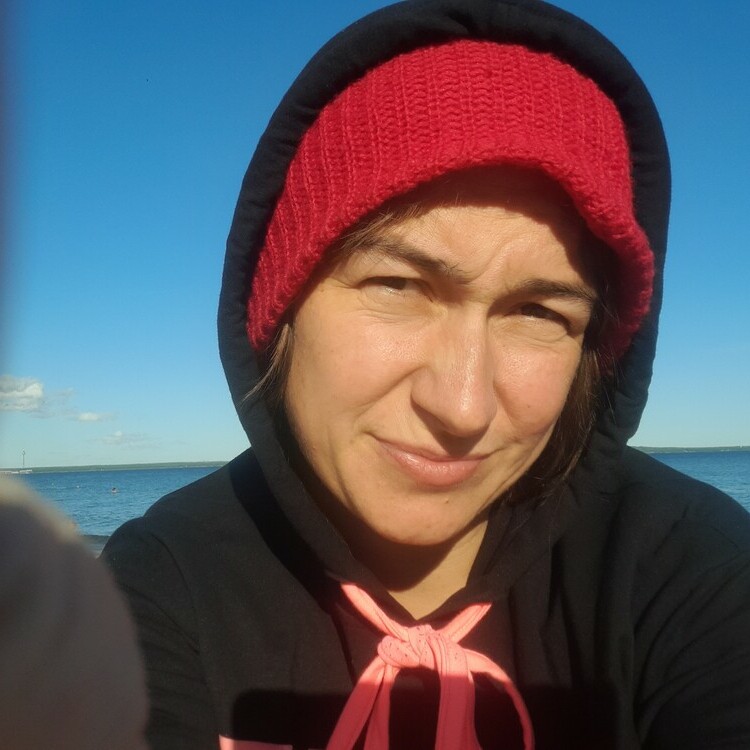
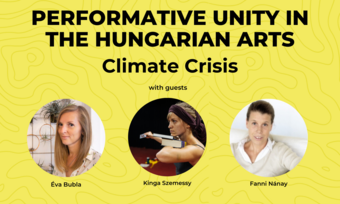





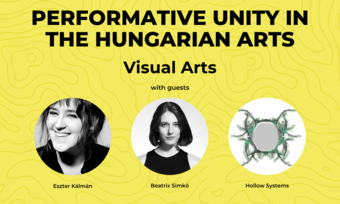



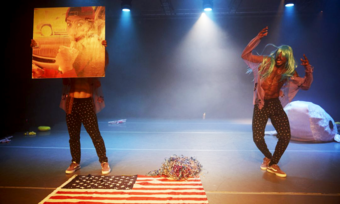


Comments
The article is just the start of the conversation—we want to know what you think about this subject, too! HowlRound is a space for knowledge-sharing, and we welcome spirited, thoughtful, and on-topic dialogue. Find our full comments policy here